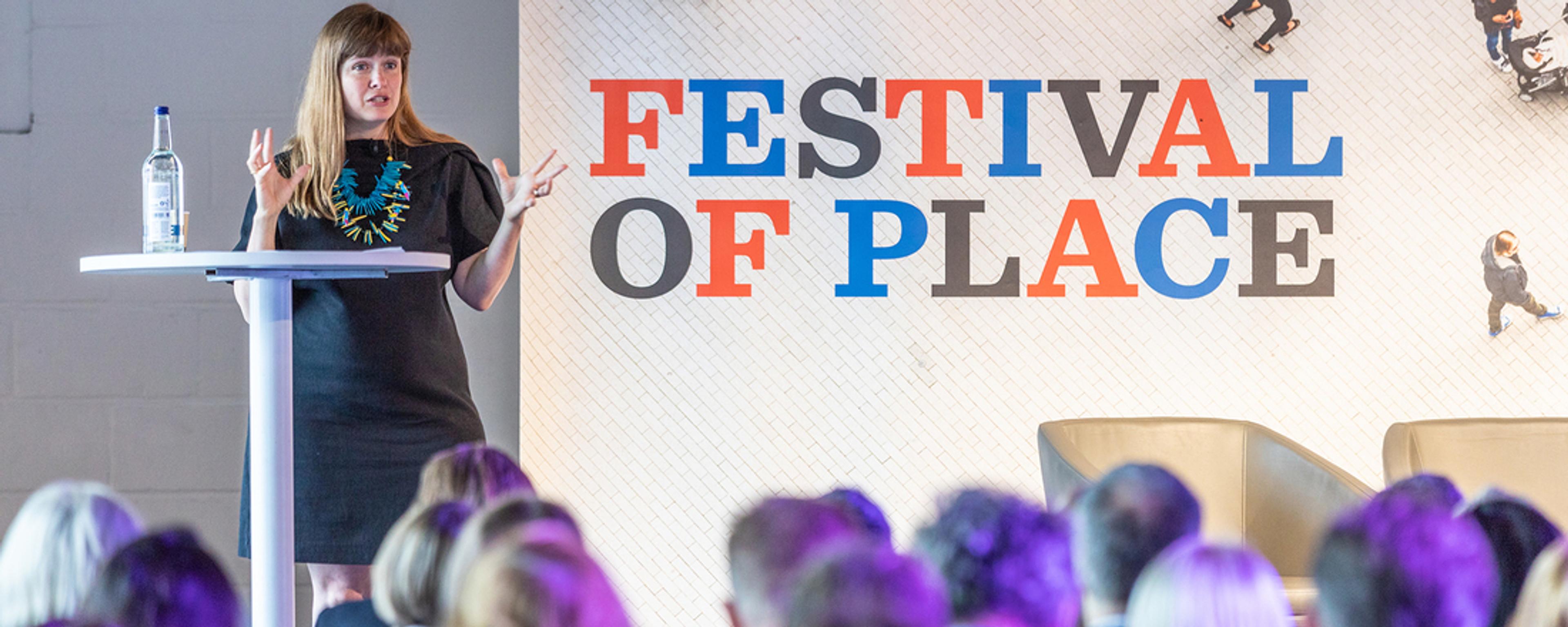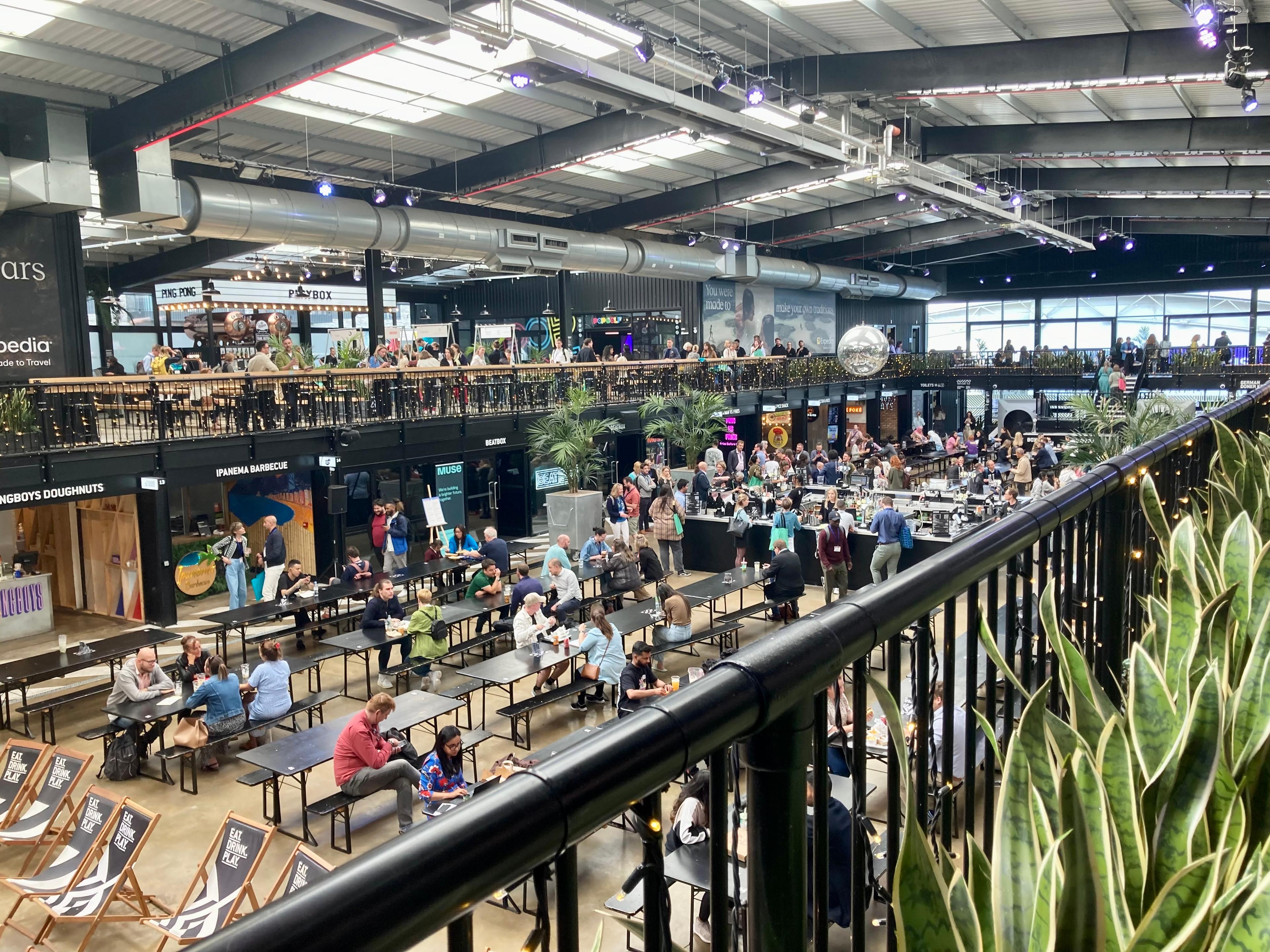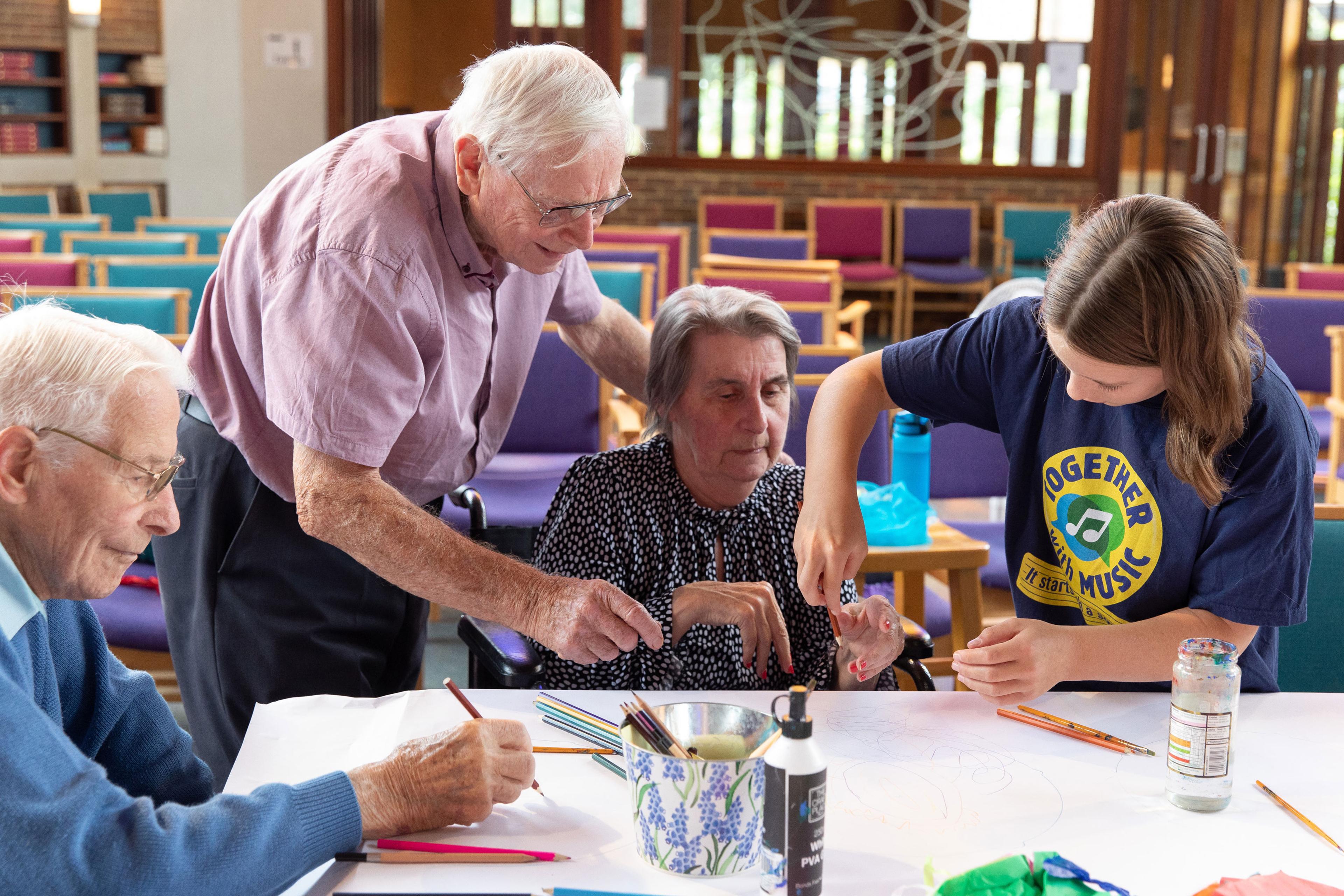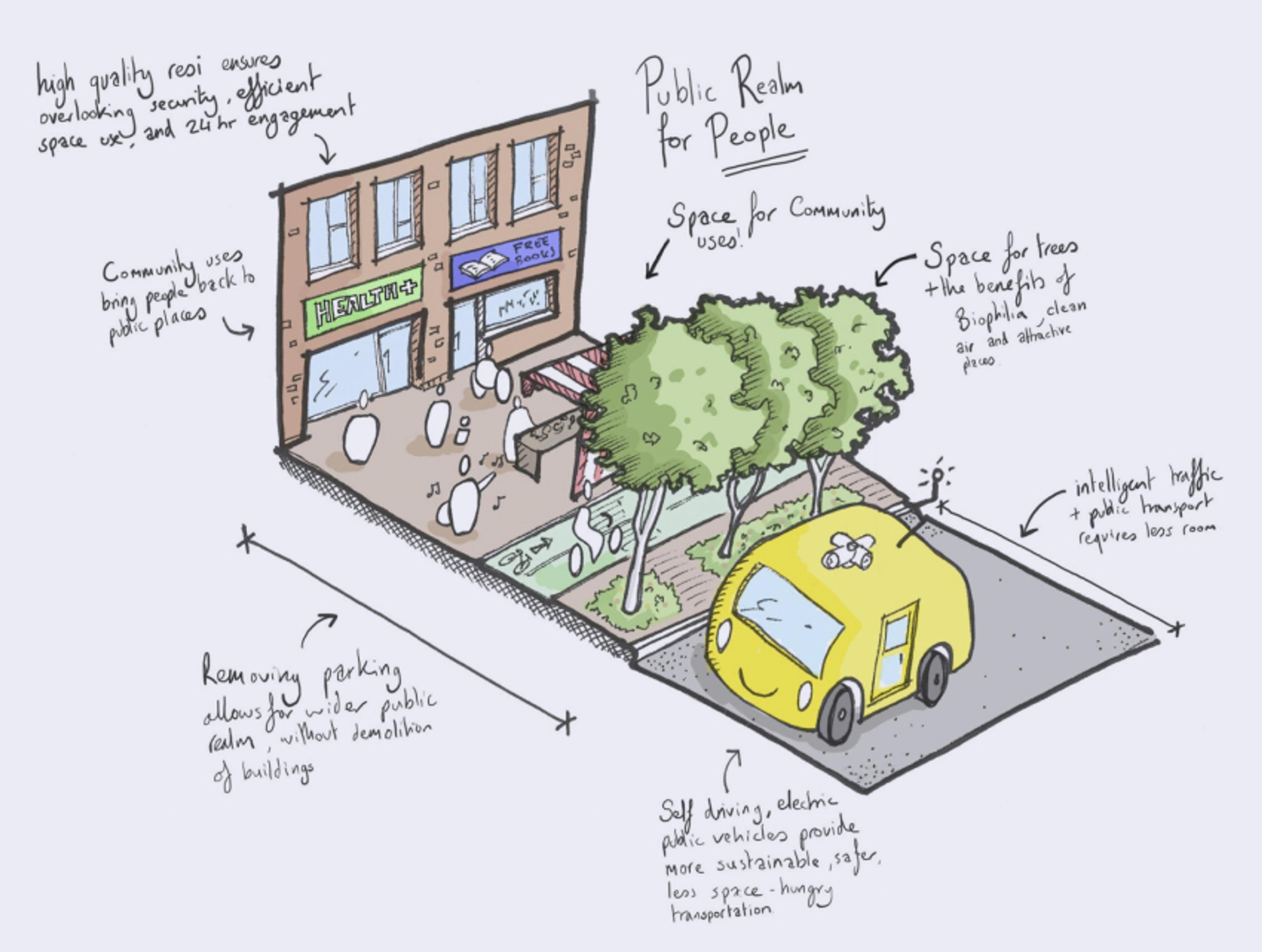Festival of Place 2023 – the highlights
by Sara Veale, Future Spaces Foundation
2023
Festival of Place celebrates vibrancy and social responsibility in urban placemaking, with a focus on community, sustainability and inclusivity. The annual event, held this year at BOXPARK Wembley, is aimed at developers and designers as well as investors, researchers, authors, local government reps, youth coalitions, even activists and scientists. It’s a day of talks, panels, workshops and walking tours exploring how urban design and development can better serve people and the planet.

2023 marked my second year in a row attending as a representative of Make and the Future Spaces Foundation. As in 2022, I encountered some inspiring insights and questions around urban vitality, from the anticolonial possibilities of placemaking to perceptions of housing as a fundamental human right.
Here are my highlights from this year’s festival.
Radical regeneration
In one of the day’s keynote speeches, the academic Leslie Kern discussed community displacement across London, New York, Paris and other major cities. Her new book, Gentrification is Inevitable and Other Lies, argues against the idea of gentrification as an organic, inevitable, desirable process in modern cities, rebutting the narrative that it’s concerned with social betterment rather than corporate profit. Why, she asked us, is urban regeneration primarily led by private investment? Why don’t we view it as a social responsibility and empower governments and communities to take the lead on it?
She began her talk by examining the current state of gentrification and ongoing trends leading to community displacement, particularly in the housing sector. These include the classification of housing as an asset class; the mass conversion of residential property into Airbnbs; the lack of protection against predatory landlords; and the rise of landlord ‘influencers’ who promote buy-to-let property as a route to financial freedom.
Drawing on research that inspired her 2019 bestseller Feminist City, she went on to discuss the disproportionate impact these trends have on women, especially in terms of public housing, where women make up the majority of tenants. Women experience higher rates of poverty, single parenthood and domestic violence than men, all of which make them especially vulnerable to eviction. With the ongoing erosion of affordable housing across our cities, homelessness among women is a major problem in many places, including the UK – an issue that also affects other marginalised groups, including LGBTQ+ communities.
Finally, Kern talked us through tools for equitable, intersectional regeneration, offering examples of some of these in action. For example, community benefit agreements are enshrined in local legislation in Detroit to ensure that new developments provide concrete benefits to local people. And in Chicago, anti-displacement measures and non-profit development models are increasingly common to help keep existing residents in place as their neighbourhoods develop. Other recommended tools include community land trusts, out-of-the-box partnerships, and taxation models designed to offset land value uplift.

Feminist mapping
Dr Julia King, a policy fellow at LSE Cities, and Imogen Clarke, co-founder of the advocacy group Make Space for Girls, led one of the day’s most popular workshops, which challenged us to explore the public realm through the lens of gender. Together with some of their colleagues, King and Clarke presented research and campaign material aimed at making urban spaces safe and inviting for girls and young women.
Clarke talked us through some of the complications of the UK’s Equality Act, which she feels is binary in essence, leaving little space for gender fluidity; and explained how this plays out in parks around the country, where the standard provision for teens primarily comprises skate parks, fenced pitches and BMX tracks – all typically dominated by boys. She noted that her work isn’t about designing boys out of public spaces but designing girls in, with a focus on tackling systemic barriers and engaging with users on their experience of local space.
From here, King and her team discussed the role of judgement in public spaces like parks, and how this can be as discouraging to girls as a lack of safety, mainly due to certain expectations of how girls should conduct themselves. Addressing this is complicated, they said, by something called the ‘Girl Effect’ – the idea that it’s not fair to expect girls to dismantle the patriarchy themselves. This line of thinking is the basis for the Young Researcher-in-Residence scheme at LSE Cities, which employs 16- to 25-year-olds as collaborators in public space research and strategic design. Their lived experience is helping King’s team develop arguments and methodologies for more inclusive city-making.
The workshop rounded off with a group exercise asking us to reflect on various maps of London and how certain places make or might make us feel, given what we know about their physical and demographic contours. Green spaces were a big point of conversation in my group. We discussed our individual relationships with the parks and gardens on our particular map, and how factors like accessibility, facilities, time of day, visibility and maintenance all influence the user experience, especially for women.

High street revitalisation
To what extent do our high streets influence our sense of identity? How can we make their development more inclusive of more voices? One panel discussed these questions and more, examining how property professionals can collaborate with the public sector and community representatives for positive, inspiring high street regeneration.
One suggestion for ensuring development is fit for purpose was the assembly of local committees, like the Palmers Green Action Team, which is powered by 100 volunteers working to prioritise beauty, accessibility and engagement in their North London neighbourhood. In 2022, the team began running regular markets in a new community space just off the high street, showcasing up-and-coming craftspeople, musicians and food producers.
Panellists also discussed the potential for local businesses to coinvest in each other to consolidate their real estate footprint – for example, a co-working space with an associated creche, or a pub that holds yoga classes in the morning – and offered ideas for imaginative anchor institutions, like museums, that might fill the shoes of now-defunct malls and department stores.
Morwenna Hall of Related Argent was particularly vocal when it came to the topic of integrating schools and other community facilities into our town centres. She also discussed creative tools for measuring community wellbeing, including the ‘flourishing’ index in place at Brent Cross Town to assess levels of safety, trust and participation across this new development in North West London. The idea is that ongoing data collection will allow for course correction as the neighbourhood develops.
Amanpril Arnold of Property X-Change was another a powerful voice, emphasising the need for inclusive design strategies that identify and respond to local needs rather than attempting a one-size-fits-all approach. A co-chair of the Greater London Authority’s Disability Network and a self-described “Deaf built environment changemaker,” she’s currently working towards London’s first mixed-use cultural space for the Deaf community.






